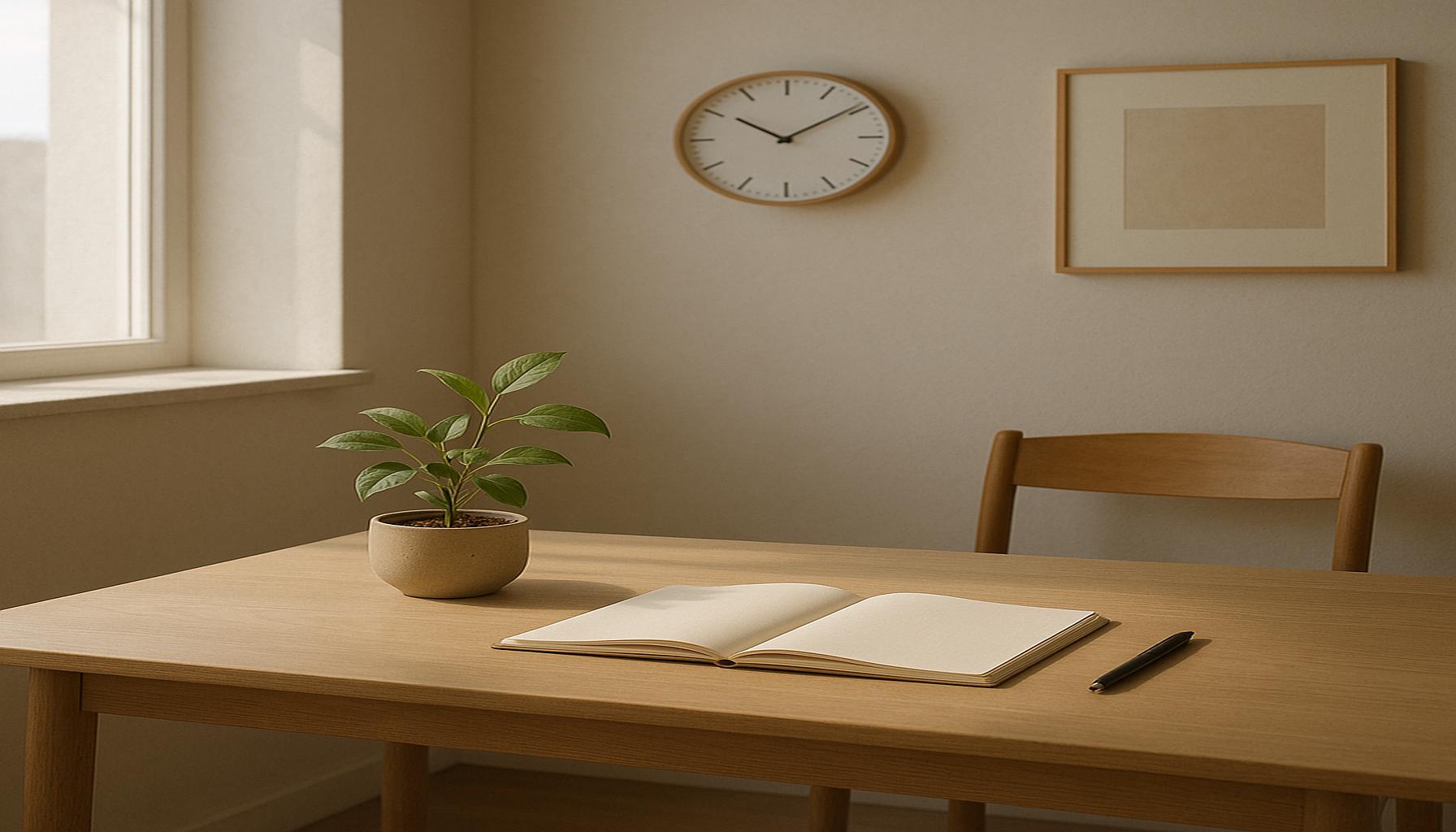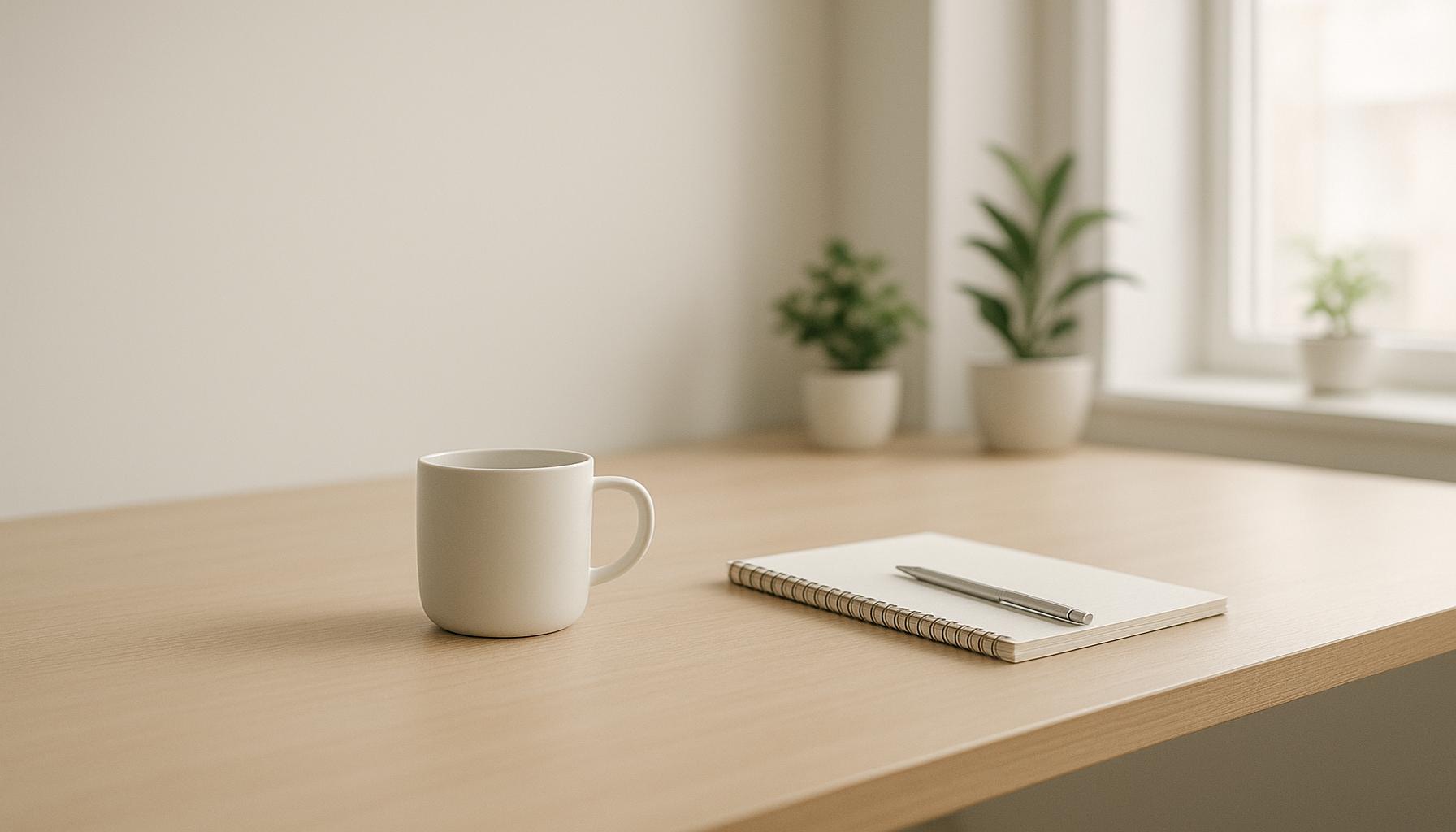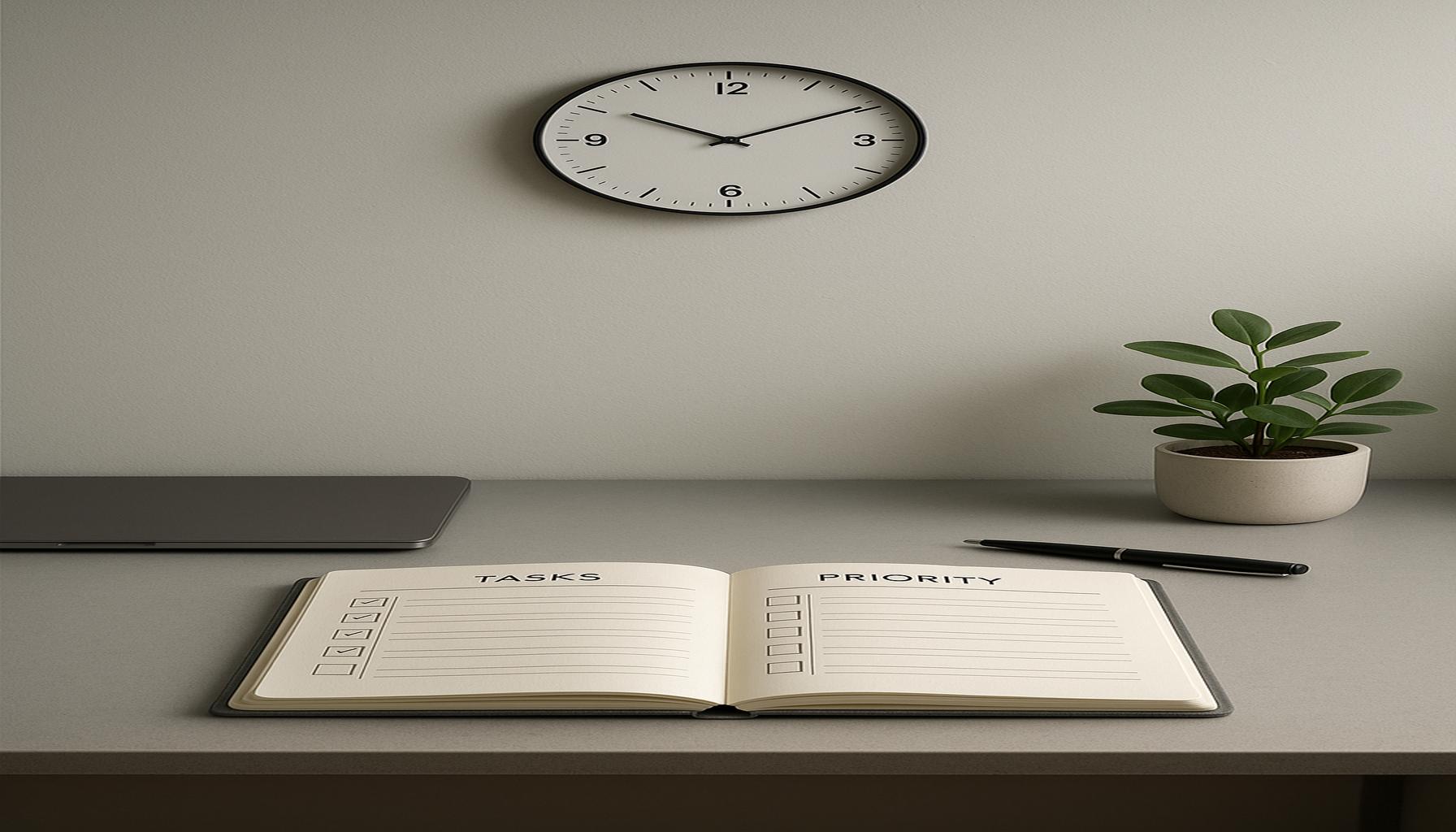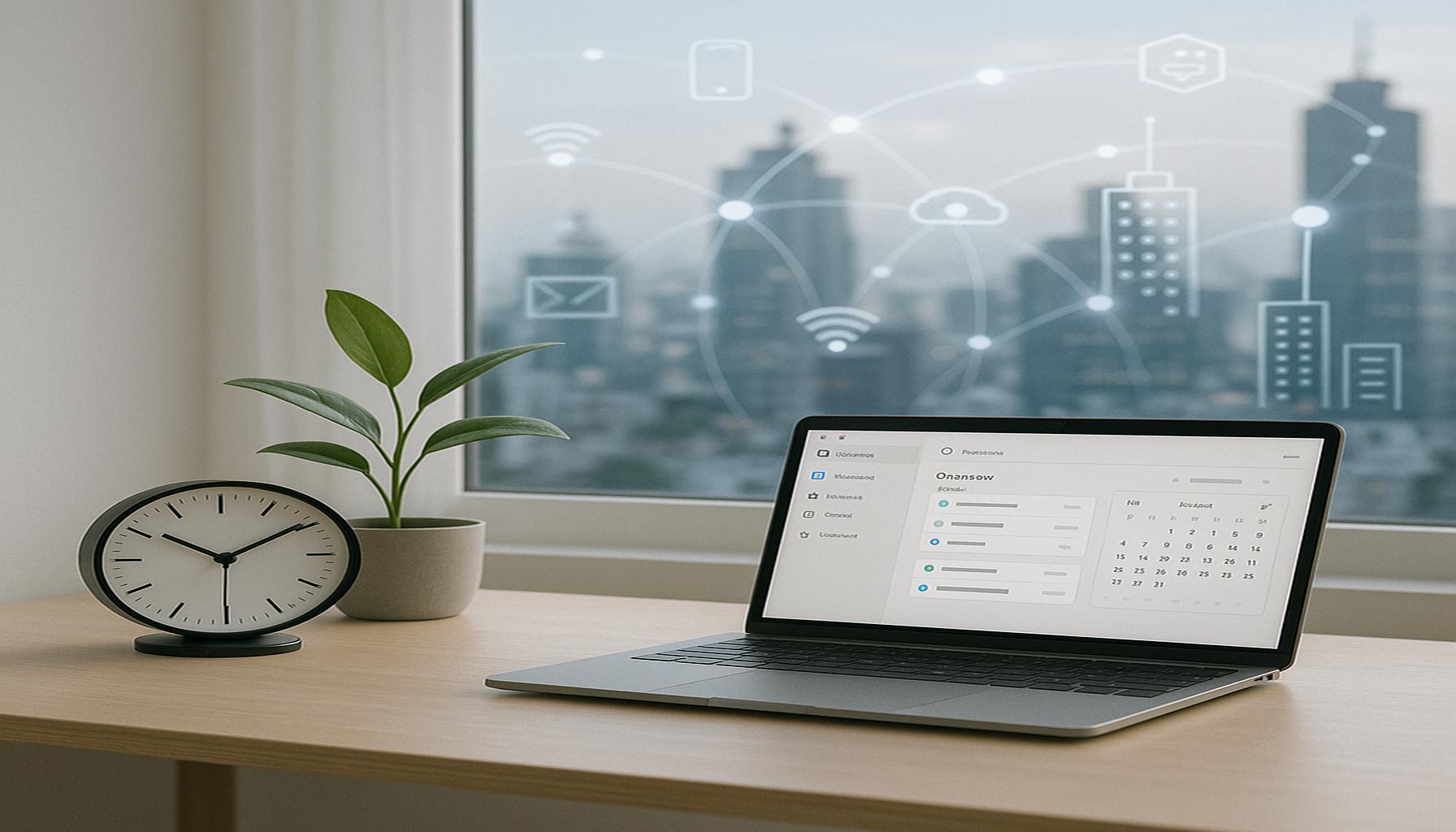The Art of Prioritizing: How Minimalism Can Transform Your Daily Decisions

Embracing Order in a Chaotic Landscape
In today’s hyper-connected world, we’re often bombarded with a myriad of choices and constant distractions that can easily cloud our judgment. Whether it’s the influx of notifications sizzling on our screens, or the relentless tasks that seem to pile up, the struggle to prioritize what truly matters has never been more pronounced. Mastery of prioritization becomes crucial not just for productivity but also for the overall quality of our lives.
A fundamental shift towards minimalism can significantly alter both our physical surroundings and mental landscapes. This philosophy encourages us to strip away the unnecessary, fostering not only a cleaner home but a clearer mindset. Let’s delve deeper into some essential aspects that can aid in fine-tuning your prioritization skills:
- Decluttering your environment: A clear, organized space can serve as a catalyst for a clear mind. Numerous studies suggest that a tidy home can reduce anxiety and enhance focus. For example, the practice of organizing your workspace—removing extraneous items and keeping only what is essential—can lead to improved concentration and efficiency.
- Focusing on essential tasks: Identifying what truly drives you forward is imperative. Techniques such as the Eisenhower Matrix can help by categorizing tasks into four quadrants: urgent and important, important but not urgent, urgent but not important, and neither. By discerning which tasks fall into the first two categories, you can prioritize what deserves your immediate attention.
- Cultivating mindful habits: Adopting practices like meditation or journaling encourages self-awareness and enhances decision-making. Studies show that individuals who engage in mindfulness practices are better equipped to manage stress and make thoughtful, deliberate choices. Incorporating even a few minutes of mindfulness into your daily routine can promote clarity and enhance your prioritization skills.
Research underscores that minimalism not only alleviates stress but also boosts productivity. When we align our daily activities with our core values, our decision-making becomes more intentional, leading to a profound transformation in how we approach our tasks and responsibilities. This realignment also positively impacts our well-being, promoting a sense of fulfillment and purpose.
As you explore the powerful concept of minimalism, consider how it can reshape your daily routine. Reflect on the changes that prioritization might bring to your life and how informed choices can lead you toward a more meaningful existence. Getting started may be challenging, but the journey towards clarity and intentionality promises invaluable rewards.
DISCOVER MORE: Click here to deepen your understanding
Breaking Down the Path to Simplification
At the heart of minimalism lies a profound understanding of what it means to prioritize in an increasingly cluttered world. As digital distractions proliferate and the pressure to meet endless demands intensifies, the capacity to focus on essential decisions becomes vital. To harness the power of minimalism in your daily life, it’s crucial to break down the process into actionable strategies that cultivate clarity and intentionality.
Understanding Your Core Values is the foundation upon which prioritization rests. Take a moment to reflect on what truly matters to you—be it family, career, health, or personal growth. Writing these values down can create a guiding compass that helps you navigate through choices. When confronted with options, asking yourself, “Does this align with my core values?” can streamline the decision-making process and eliminate unnecessary tasks.
Implementing the 80/20 Rule, also known as the Pareto Principle, can revolutionize how you approach your daily agenda. This principle states that 80% of our results come from 20% of our efforts. By identifying the few tasks that produce the greatest impact, you can concentrate your energy on those activities that drive significant outcomes. For instance, whether you’re managing a project at work or organizing your personal life, concentrating on high-leverage tasks can amplify your productivity.
- Prioritization Techniques: There are several effective methods to refine your prioritization skills:
- SMART Goals: Ensure your tasks are Specific, Measurable, Achievable, Relevant, and Time-bound, allowing you to focus on outcomes rather than mere activities.
- Daily and Weekly Planning: Set aside time for daily and weekly reviews where you align tasks with your core values. This practice helps to eliminate the noise and brings clarity to what truly needs your attention.
- Time Blocking: Designate specific blocks of time for critical tasks. This method not only ensures you allocate sufficient time to what matters but also minimizes distractions during those focused periods.
Engaging in these strategies not only facilitates effective prioritization but also ushers in a sustainable sense of minimalism that permeates all aspects of life. A study from the American Psychological Association indicated that individuals who actively prioritize their tasks experience lower stress levels and higher satisfaction in both personal and professional domains. This reinforces the notion that embracing minimalism as a lifestyle choice can lead to a transformative shift—not just in how we manage daily tasks but also in how we perceive our choices.
As you begin to explore these techniques, consider the overall impact that clarity and focus can bring to your life. The journey toward prioritization and minimalism may seem daunting initially, but with deliberate practice, it promises to enrich your daily decisions and ultimately enhance your overall quality of life.
| Advantage | Description |
|---|---|
| Clarity of Purpose | Minimalism helps to eliminate distractions, allowing for clearer decision-making processes. |
| Enhanced Focus | Fewer possessions can lead to improved concentration on tasks that matter most. |
| Time Efficiency | With less clutter, individuals can allocate more time to priority actions. |
| Stress Reduction | A minimalistic approach can help decrease decision fatigue and overall anxiety. |
By adopting the principles of minimalism as outlined in “The Art of Prioritizing,” you can experience profound shifts in your daily routines. Imagine waking up each morning with a clear mind, ready to tackle your most important tasks. The chaos of too many decisions can often lead to paralysis; however, when you’re surrounded by only what you truly value, decision-making becomes a much smoother process. Prioritizing becomes not just a task but an art form, guiding you towards greater fulfillment in both your personal and professional life.Minimizing distractions allows you to focus on what truly matters—be it work projects, family time, or personal growth. When your mental bandwidth isn’t consumed by material clutter, you channel your energy towards things that provide real satisfaction and joy. This transformative journey of prioritizing not only enriches your life but opens up pathways you may have never considered before. Let minimalism guide your path to becoming your best decision-maker.
DON’T MISS: Click here to unlock your productivity potential
Streamlining Your Decision-Making Process
In our quest for simplicity, it’s essential to streamline our decision-making processes. Every day, we face countless choices that can drain our mental energy. By minimizing decision fatigue, we can reserve our cognitive resources for the decisions that truly matter. One effective method to achieve this is establishing routines. Routines create a framework that allows for automatic decision-making, freeing individuals to concentrate on high-stakes choices. For example, developing a morning routine that includes the same breakfast, exercise, and even choosing an outfit can alleviate the mental burden associated with decision-making.
Reducing Options is another pivotal element in simplifying choices. Research indicates that too many options can lead to paralysis by analysis, where individuals struggle to make decisions due to the overwhelming number of choices. This phenomenon was illustrated in a study by psychologists Sheena Iyengar and Mark Lepper, who found that when consumers were presented with fewer choices, they were more likely to make a purchase. In practical terms, simplifying choices could mean narrowing down your daily to-do list to three significant tasks or limiting your weekend plans to one fulfilling activity. This refinement not only enhances decisiveness but also enriches the quality of experiences.
Understanding the Importance of Boundaries is also foundational to mastering prioritization. Establishing clear limits on your time and commitments can drastically improve your focus. In a culture where saying “yes” is often viewed as a virtue, learning to say “no” can be liberating. This might include declining unnecessary meeting invitations or avoiding social events that don’t match your core values. By doing so, you create space in your life for activities that resonate with your priorities, thereby fostering a minimalistic lifestyle.
- Evaluating Time vs. Energy: When prioritizing tasks, it’s essential to consider not just the time involved but also your energy levels. Tasks that require high cognitive function, such as brainstorming or strategic planning, should be executed during peak energy hours, while simpler tasks can be saved for low-energy periods.
- Using Technology Wisely: Leverage apps and tools that facilitate prioritization without adding to digital clutter. Applications like Todoist, Trello, or Asana can help organize tasks visually, ensuring that you spend less time thinking about what to do next and more time doing it.
- Mindful Decision-Making: Incorporating mindfulness practices can enhance your decision-making process. Taking a few moments each day to meditate or engage in deep-breathing exercises can help clear mental clutter and sharpen focus, enabling you to make decisions that are aligned with your minimalistic goals.
Additionally, it’s essential to recognize that minimalism isn’t just about quantity but also quality. Transitioning from a habitual multitasking mindset to embracing the concept of single-tasking can redefine productivity. Studies suggest that individuals who focus on one task at a time perform better and experience less stress. This approach is crucial as it highlights the importance of dedicating time and effort to the few tasks that matter most. The integration of minimalism into your decision-making not only leads to increased fulfillment but redefines your relationship with both tasks and time.
As you continue to navigate the art of prioritizing, consider how each small change contributes to a larger lifestyle transformation that embraces minimalism and intentionality. By refining your decision-making processes and aligning them with your core values, you cultivate a life rich in purpose and authenticity.
DISCOVER MORE: Click here to dive deeper
Conclusion: Embracing Minimalism for Thoughtful Decision-Making
As we draw the curtains on our exploration of the art of prioritizing through the lens of minimalism, it becomes evident that our daily decisions can be profoundly transformed by adopting a more intentional approach. By shedding the excess that clouds our judgment, we cultivate clarity and focus, allowing our actions to align more closely with our values and aspirations. Simplifying choices not only reduces mental clutter but also empowers us to direct our energy toward what genuinely matters.
Moreover, embracing routines and mindful practices facilitates a smoother decision-making process and fosters a sense of stability amidst life’s inherent unpredictability. The power of saying “no” to non-essential commitments unlocks the potential for deeper connections and more fulfilling experiences. In a society that glorifies busyness, making conscious decisions about how we spend our time can lead to richer, more meaningful lives.
Ultimately, the journey towards prioritization is an ongoing one, inviting you to regularly evaluate your choices and commitments. By leaning into minimalism, you not only transform your decision-making but also open the door to a lifestyle that champions authenticity and purpose. Whether it’s through reducing options or establishing clear boundaries, the tools of minimalism are at your disposal, waiting to assist you in crafting a life that resonates with your true self.
As you continue this journey, allow your decisions to reflect the essence of who you are, fostering a compassionate relationship with your time, energy, and focus. The art of prioritizing, fueled by the principles of minimalism, can indeed be a catalyst for profound personal transformation.


